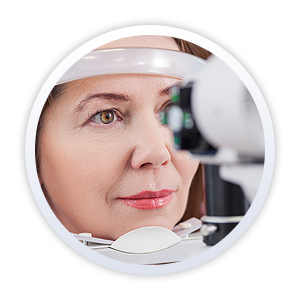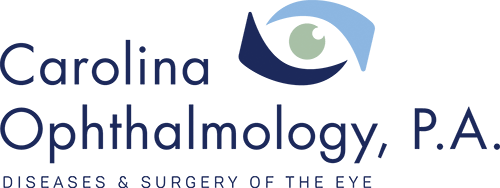
Marlene Klein was having trouble recognizing familiar faces and began to mistake her fingers for carrots as she chopped vegetables. However, she had no idea she was slowly losing her vision to a leading cause of blindness, age-related macular degeneration (AMD). That’s because her brain was compensating for the developing blind spots in her vision. Marlene is not alone. According to a recent Harris Poll survey, most Americans are unaware that people do not always experience symptoms before losing vision to eye disease. Each February, we participate in Age-Related Macular Degeneration Awareness month. Carolina Ophthalmology, PA and the American Academy of Ophthalmology are urging people to protect themselves from vision loss. You can do this by getting a baseline eye exam by age 40.
What Is Age-Related Macular Degeneration?
More than 2 million Americans are living with the most advanced forms of AMD. That number that is expected to reach 4.4 million by 2050. It is the leading cause of blindness among white Americans over 40. And it’s a leading cause of irreversible vision loss throughout the world.
AMD happens when part of the retina called the macula is damaged. This part of the eye delivers sharp, central vision needed to see objects straight ahead. Over time, the loss of central vision can interfere with everyday activities, such as the ability to drive, read, and see faces clearly.
How To Catch AMD Early
Because AMD often has no early warning signs, getting regular comprehensive eye exams from an ophthalmologist is critical. Adults with no signs or risk factors for eye disease should get a baseline eye disease screening at age 40. This is the time when early signs of disease and changes in vision may start to occur. From age 40 to 54, get your eyes examined every 2 to 4 years; from 55 to 64, every 1 to 3 years. By age 65, get an exam every one to two years, even in the absence of symptoms or eye problems. If you have risk factors for eye disease, you will need to be examined more frequently.
Ophthalmologists – physicians who specialize in medical and surgical eye care – have more tools than ever before to diagnose AMD earlier, and to treat it better. But these advances cannot help patients whose disease is undiagnosed, or patients who are unaware of the seriousness of their disease.
“As the population in America continues to age, the impact of AMD on the well-being of our citizens is only likely to grow,” said Raj N. Patel, MD, retina specialist with Carolina Ophthalmology. “While the treatment for this disease has certainly improved significantly over the last 2 decades, if we do not prioritize routine dilated eye exams patients may miss an opportunity to be diagnosed and or treated in a timely manner which can lead to permanent vision loss.”
Do Your Part To Protect Your Eye Health
Eye health needs to be a priority. According to that same Harris Poll, 81% of respondents say they do everything they can to protect the health of their eyes. However, only 11% say eye appointments top their list of the most important doctor appointments to keep.
But Marlene is not one of them. She is vigilant about keeping appointments with her ophthalmologist.
“I keep going back to see my ophthalmologist every month because I want to be able to see my husband’s face and to see my three, beautiful daughters,” said Marlene.
Her commitment has paid off. Marlene’s initial diagnosis was dire. But today she can recognize the faces of her family and friends and cook without nicking her fingers. Learn more about Marlene’s story here.






